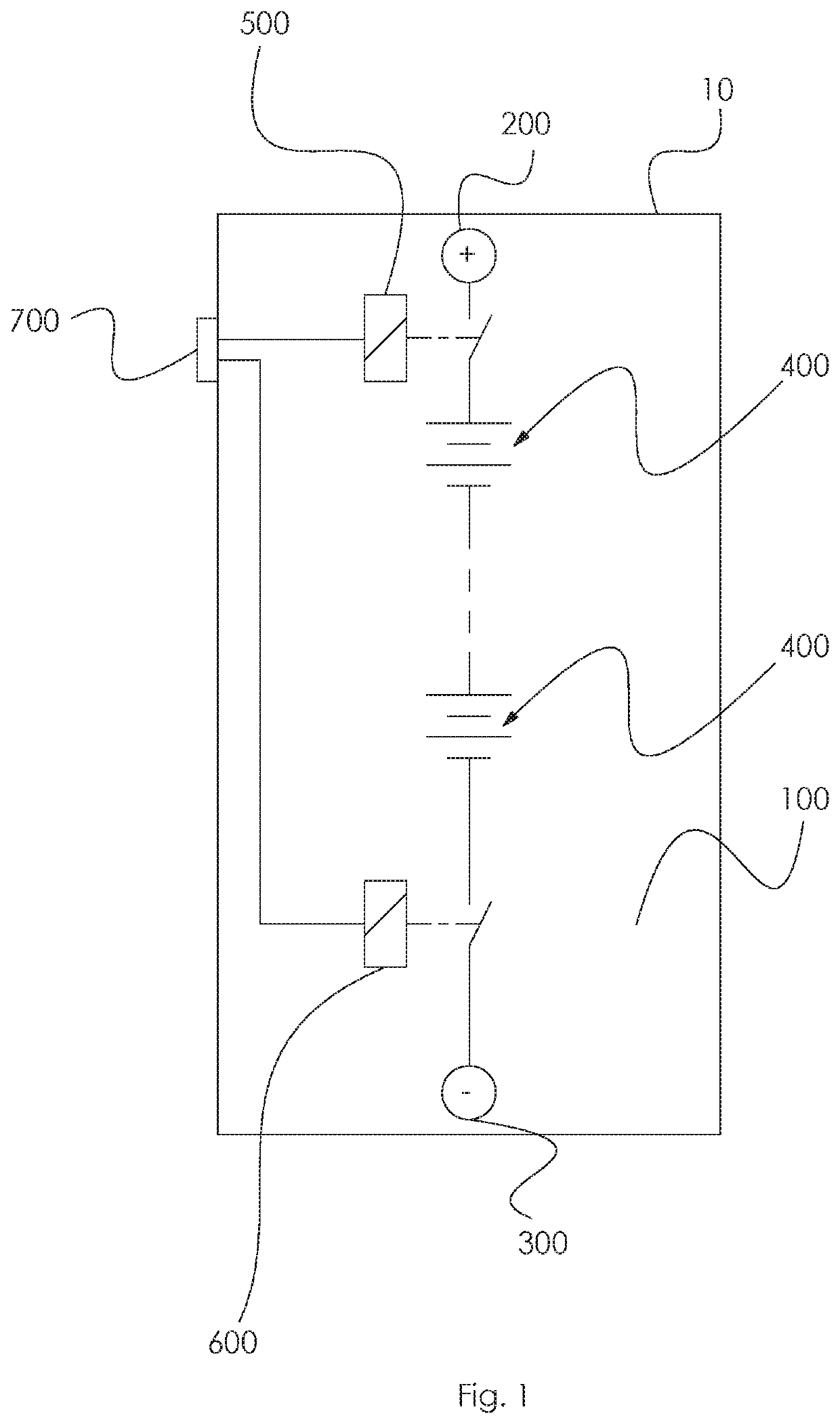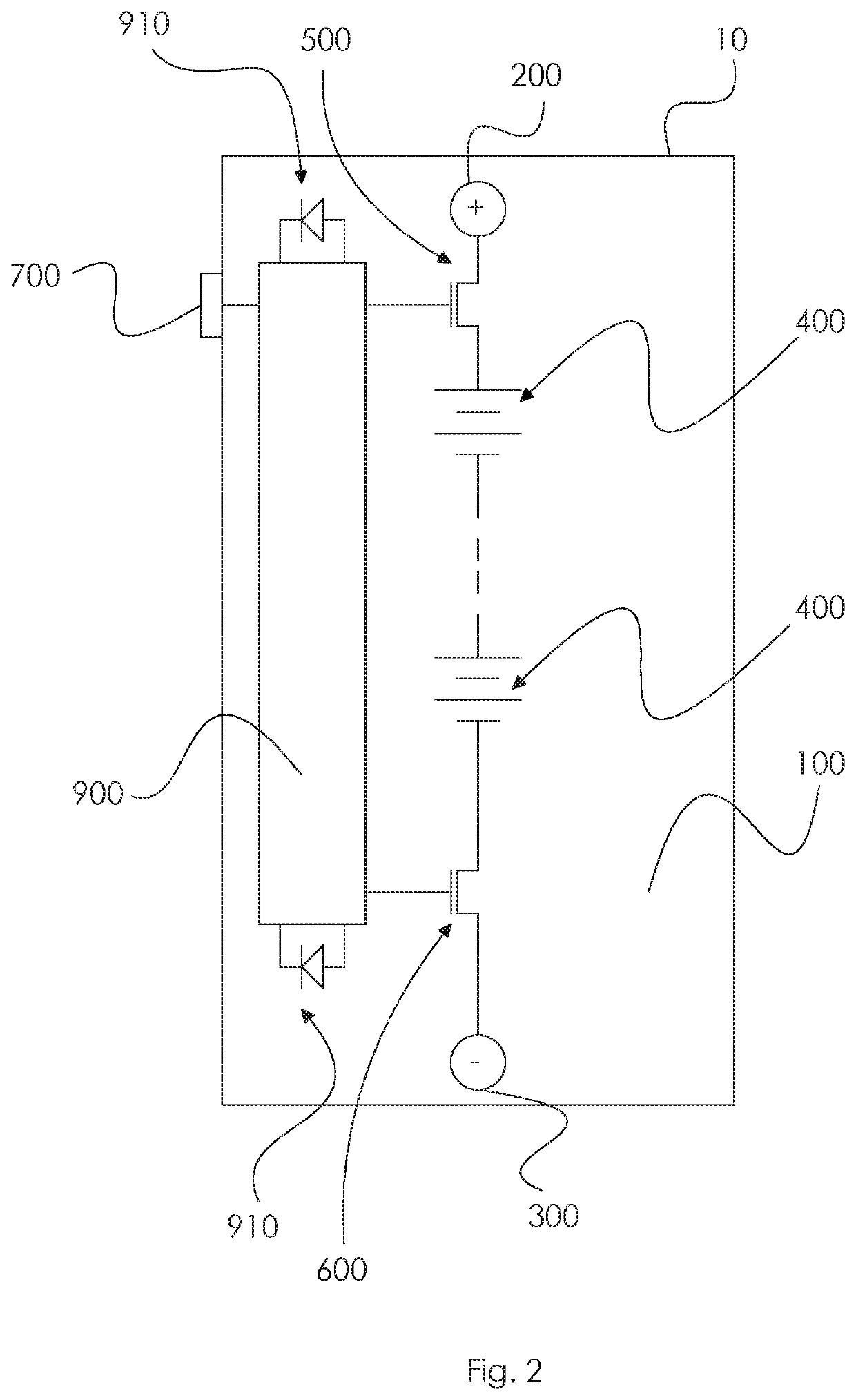High voltage battery module with series connected cells and internal relays
a battery module and series connection technology, applied in secondary cells, battery components, battery servicing/maintenance, etc., can solve the problems of high power level, fire or explosion, short circuit in the pack, etc., to minimize the risk of fire and energy loss in operation, the effect of safe handling
- Summary
- Abstract
- Description
- Claims
- Application Information
AI Technical Summary
Benefits of technology
Problems solved by technology
Method used
Image
Examples
Embodiment Construction
[0029]An embodiment of the present invention is illustrated in FIG. 1 is the most basic embodiment of the invention. The battery module 10 comprises an enclosure 100, a plurality of series connected cells 400, a positive terminal 200, and a negative terminal 300. In default configuration, all the said components are electrically isolated from all others, no voltage potential exists on the exterior of the pack, and no current can flow if any of said components are connected by an external electrical short.
[0030]The disclosed systems and methods for securing a battery module 10 will become better understood through review of the following detailed description in conjunction with the figures. The detailed description and figures provide examples of the various inventions described herein. Those skilled in the art will understand that the disclosed examples may be varied, modified, and altered without departing from the scope of the inventions described herein. Many variations are conte...
PUM
| Property | Measurement | Unit |
|---|---|---|
| current | aaaaa | aaaaa |
| voltage | aaaaa | aaaaa |
| voltage | aaaaa | aaaaa |
Abstract
Description
Claims
Application Information
 Login to View More
Login to View More - R&D
- Intellectual Property
- Life Sciences
- Materials
- Tech Scout
- Unparalleled Data Quality
- Higher Quality Content
- 60% Fewer Hallucinations
Browse by: Latest US Patents, China's latest patents, Technical Efficacy Thesaurus, Application Domain, Technology Topic, Popular Technical Reports.
© 2025 PatSnap. All rights reserved.Legal|Privacy policy|Modern Slavery Act Transparency Statement|Sitemap|About US| Contact US: help@patsnap.com



